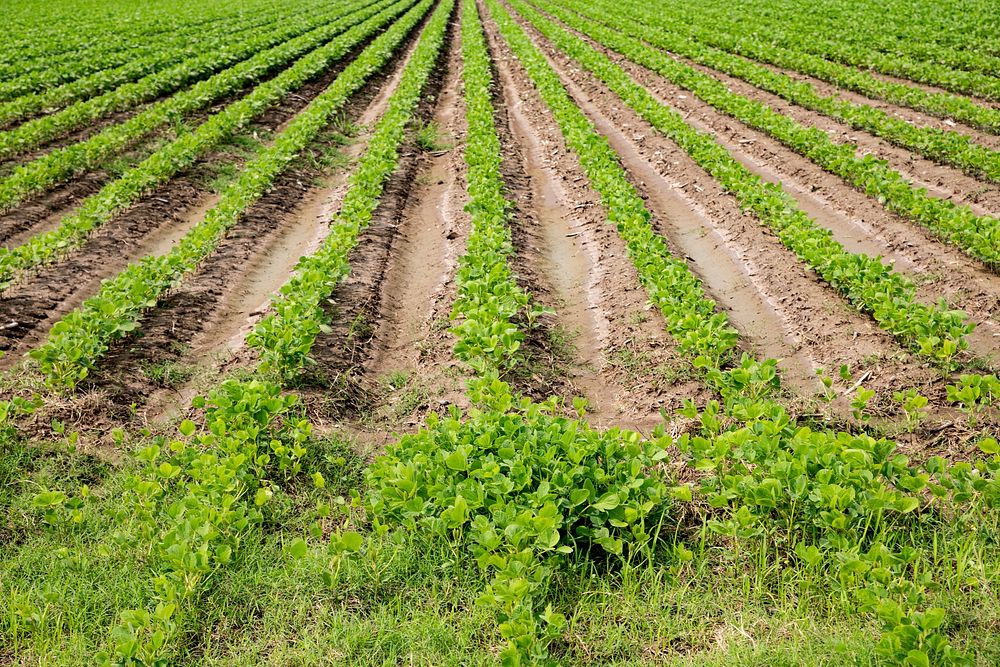
Rows of soybean plants grow in the fields at Seidenstricker Farms, who asked what can U.S. Department of Agriculture (USDA) Natural Resources Conservation Service (NRCS) do for them, the answer came to them in several ways at Seidenstricker Farms, owned by Robert and Cathy Seidenstricker, in DeValls Bluff, AR, on June 25, 2019.
With the help of their son Stewart, who has chosen to make his life on the farm after returning from college, the Seidenstrickers work with NRCS District Conservationist Gwen Hancock, State Irrigation Engineer Charlotte Bowie, and Civil Engineering Technician Shane Harrison on their conservation plan which include program efforts that also include underground pipelines, grade stabilization structures, water control structures, tail water ditches, multiple inlet side irrigation, moisture sensors weather stations, and pumping plants.
The reservoir is formed by four tall embankments that hold 400 acre/feet of irrigation water, part of a conservation plan that includes multiple inlet side irrigation, and tailwater recovery ditches to water rice, soybeans and corn. The system is able to reuse the water 22 times before being released. There were two little used structures where the reservoir is, but it was determined to be more cost efficient to be demolished and use as an irrigation reservoir.
Resource conservation system can include irrigation reservoirs to achieve one or more of the following: Store water to provide a reliable irrigation water supply or regulate available irrigation flows; improve water use efficiency on irrigate land; provide storage for tailwater recovery and reuse; provide irrigation runoff retention time to increase breakdown of chemical contaminants; reduce energy consumption.
Natural Resources Conservation Service has a proud history of supporting America’s farmers, ranchers, and forest landowners. For more than 80 years, we have helped people make investments in their operations and local communities to keep working lands working, boost rural economies, increase the competitiveness of American agriculture, and improve the quality of our air, water, soil, and habitat.
As the USDA’s primary private lands conservation agency, we generate, manage, and share the data, technology, and standards that enable partners and policymakers to make decisions informed by objective, reliable science.
And through one-on-one, personalized advice, we work voluntarily with producers and communities to find the best solutions to meet their unique conservation and business goals. By doing so, we help ensure the health of our natural resources and the long-term sustainability of American agriculture.
Farm Production and Conservation (FPAC) is the Department’s focal point for the nation’s farmers and ranchers and other stewards of private agricultural lands and non-industrial private forest lands. FPAC agencies implement programs designed to mitigate the significant risks of farming through crop insurance services, conservation programs and technical assistance, and commodity, lending, and disaster programs.
The agencies and service supporting FPAC are Farm Service Agency (FSA), Natural Resources Conservation Service (NRCS), and Risk Management Agency (RMA).
For more information please see www.usda.gov.
USDA Photo by Lance Cheung.
. Original public domain image from Flickr